
Vice for Liberec - a look back at the spring lecture of the Circle
The first Thursday of May was somewhat small for the architects in Holešovice. The main social event was the announcement of the 19th edition of the Grand Prix of Architects at the Trade Fair Palace, where the winner was the Revitalization of the Bastion at Božích muk by Miroslav Cikán and Pavla Melková. Another event of Thursday evening was a lecture by A1Architects studio in the new premises of Archip within the lecture series presenting the work of young studios. The gathering of architects in Holešovice was concluded with a lecture by Kruh at the Vltavská Cultural Center.
As part of the spring cycle, the Atelier Liberec presented their joint project 'Liberec City with a Vision' initiated by the Liberec city hall and supported by the academic environment of the local technical university. In addition to the two main organizers Zdena Zedníčková and Jiří Janďourek, the discussion platform also included the initiator and former mayor of Liberec Jan Korytář and the Czech-Belgian urban planner and promoter of structural plans Jiří Klokočka. Representing the organizers, the team of students from the Liberec School of Architecture FUA TUL, Pavel Špringl and Lenka Pechanová, spoke.
In his opening remarks, Jan Korytář reflected on his five-month tenure at the head of the fifth largest city in Bohemia, during which he decided to discuss the concept of the zoning plan directly with citizens in all sixteen districts. The newly elected management opted to move from the city hall to a decentralized level to understand the real needs of the residents, activate civil society, and revive previously sidelined public interests. One of the first steps of the new city hall was to approach the faculty to see if they could help create a new vision for the city together.
One of the invited foreign experts was Jiří Klokočka, who could offer his 25 years of experience as the chief architect of the 70,000-strong city of Kortrijk. In his opinion, only structural plans can adequately respond to today's transformations of cities, which completely replaced rigid zoning plans in Belgium twenty years ago.
To help the Prague audience quickly orient themselves in the realities of the North Bohemian city, Jiří Janďourek presented semester analyses that took historical changes into account. Student Pavel Špringl then contributed a comparison of similar cities abroad, which helped facilitate understanding in the subsequent design process. Zdena Zedníčková further revealed the potential of the city through a simple SWOT analysis. Although it was meant to be a vision and direction setting for the city, a whole series of similar analyses emerged to prevent the project from being attacked for its unrealistic nature, as demonstrated by Lenka Pechanová with her semester work analyzing the pros and cons of density in the city center through specific examples with various graphs and tables. Zdena Zedníčková then presented other student works seeking potential in densifying specific places so that the city would not need to expand into the surrounding nature. However, scattered development is not the only problem that Liberec faces. As Jiří Janďourek pointed out, in addition to traffic complications, the relationship of the city with the flowing Nisa is also unresolved, along with the unfortunate structuring of shopping centers into industrial districts on the outskirts. The materialization of these analyses and principles into specific urban planning projects took place in the fall of the previous year during an international workshop, the results of which would, however, warrant another independent lecture.
Last Thursday, in the intimate atmosphere of the Fra café, architectural historian Martina Flekačová discussed the history of Prague's spatial planning institutions throughout the last century.
The June lecture of Kruh will take place in the baroque refectory of the Dominican Monastery of St. Giles, where Marek Jan Štěpán will present his realizations of sacred buildings throughout the Czech Republic.
More information >
As part of the spring cycle, the Atelier Liberec presented their joint project 'Liberec City with a Vision' initiated by the Liberec city hall and supported by the academic environment of the local technical university. In addition to the two main organizers Zdena Zedníčková and Jiří Janďourek, the discussion platform also included the initiator and former mayor of Liberec Jan Korytář and the Czech-Belgian urban planner and promoter of structural plans Jiří Klokočka. Representing the organizers, the team of students from the Liberec School of Architecture FUA TUL, Pavel Špringl and Lenka Pechanová, spoke.
In his opening remarks, Jan Korytář reflected on his five-month tenure at the head of the fifth largest city in Bohemia, during which he decided to discuss the concept of the zoning plan directly with citizens in all sixteen districts. The newly elected management opted to move from the city hall to a decentralized level to understand the real needs of the residents, activate civil society, and revive previously sidelined public interests. One of the first steps of the new city hall was to approach the faculty to see if they could help create a new vision for the city together.
One of the invited foreign experts was Jiří Klokočka, who could offer his 25 years of experience as the chief architect of the 70,000-strong city of Kortrijk. In his opinion, only structural plans can adequately respond to today's transformations of cities, which completely replaced rigid zoning plans in Belgium twenty years ago.
To help the Prague audience quickly orient themselves in the realities of the North Bohemian city, Jiří Janďourek presented semester analyses that took historical changes into account. Student Pavel Špringl then contributed a comparison of similar cities abroad, which helped facilitate understanding in the subsequent design process. Zdena Zedníčková further revealed the potential of the city through a simple SWOT analysis. Although it was meant to be a vision and direction setting for the city, a whole series of similar analyses emerged to prevent the project from being attacked for its unrealistic nature, as demonstrated by Lenka Pechanová with her semester work analyzing the pros and cons of density in the city center through specific examples with various graphs and tables. Zdena Zedníčková then presented other student works seeking potential in densifying specific places so that the city would not need to expand into the surrounding nature. However, scattered development is not the only problem that Liberec faces. As Jiří Janďourek pointed out, in addition to traffic complications, the relationship of the city with the flowing Nisa is also unresolved, along with the unfortunate structuring of shopping centers into industrial districts on the outskirts. The materialization of these analyses and principles into specific urban planning projects took place in the fall of the previous year during an international workshop, the results of which would, however, warrant another independent lecture.
Last Thursday, in the intimate atmosphere of the Fra café, architectural historian Martina Flekačová discussed the history of Prague's spatial planning institutions throughout the last century.
The June lecture of Kruh will take place in the baroque refectory of the Dominican Monastery of St. Giles, where Marek Jan Štěpán will present his realizations of sacred buildings throughout the Czech Republic.
More information >
The English translation is powered by AI tool. Switch to Czech to view the original text source.
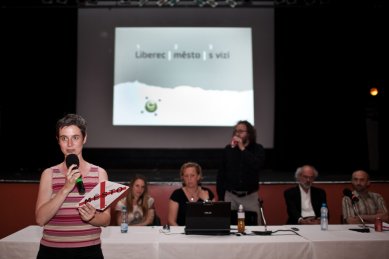
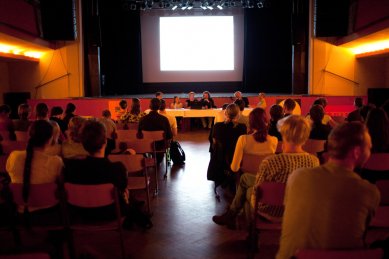
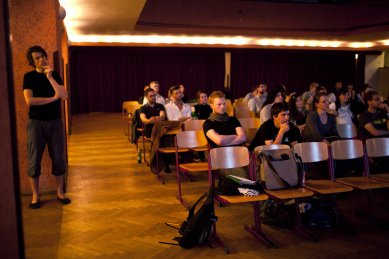
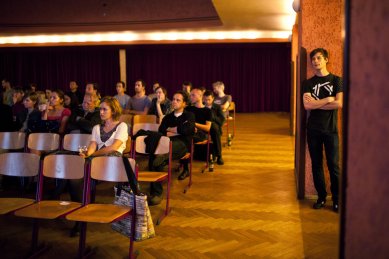
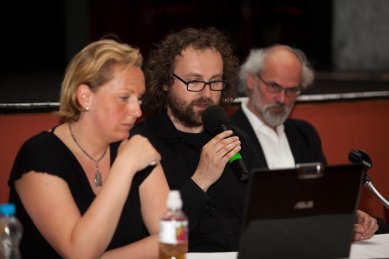
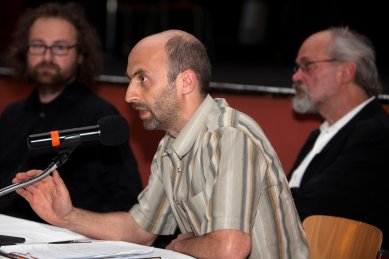
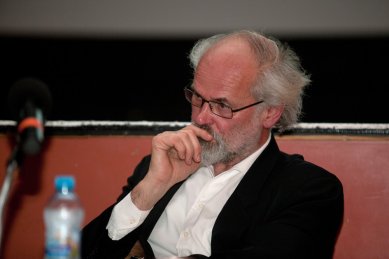

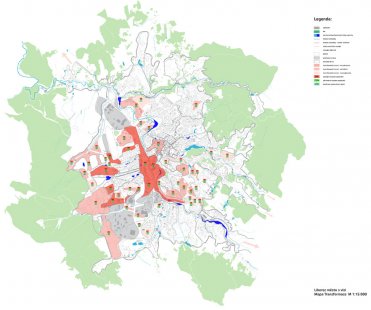
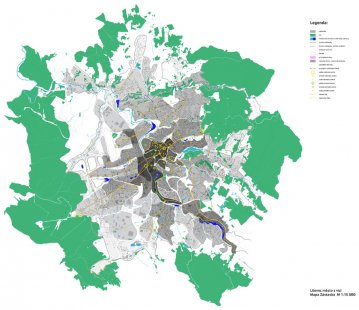
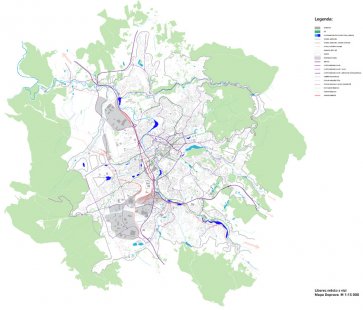
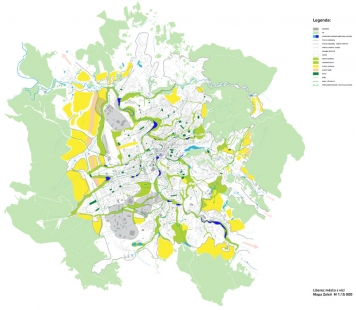
0 comments
add comment






